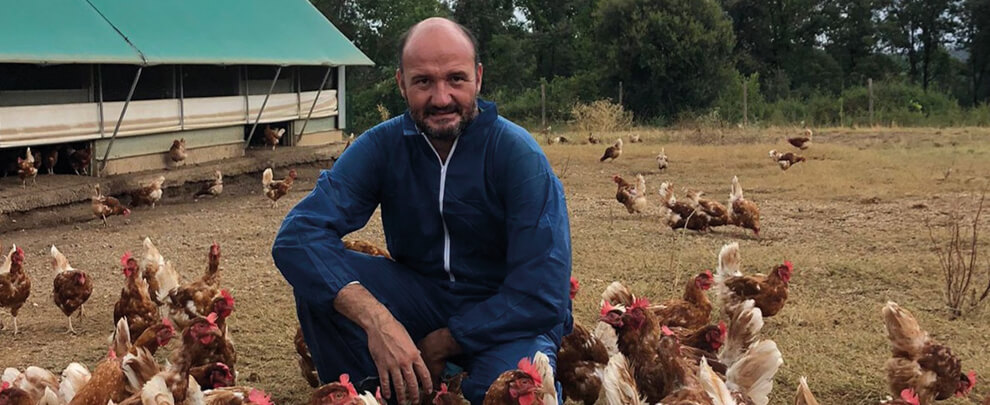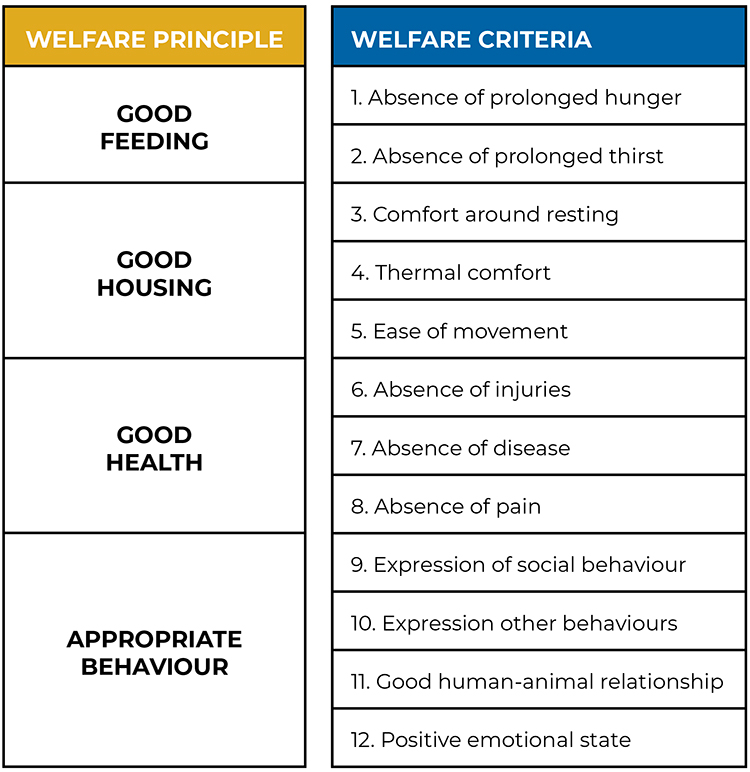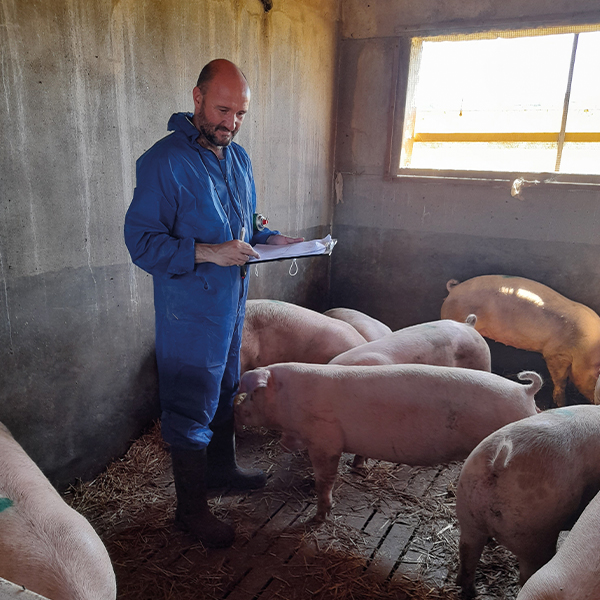Blog
Blog

How can we measure and certify animal welfare on farms?
16th April 2024 - News
Since 2018, pig farms can obtain the Welfair® Animal Welfare certification. This seal verifies that the animals on these farms have a level of animal welfare above the European legal minimum (one of the most demanding in the world). More and more farms are obtaining this certification. It is essential for their customers and, in the future, undoubtedly for the end consumer. To learn more about wellness trends and Welfair® certification, we spoke to Lluís Vegas, Welfair®’s lead auditor.
In recent years, animal welfare has become one of the fundamental pillars of pork production. What caused this change?
The large distributors saw that the consumer wanted to know more about how animals are raised and under what conditions to choose between animals raised with a higher or lower animal welfare status and to have a certification that verifies it. These were the beginnings, but over the years, it has evolved, and the requirements are becoming increasingly demanding.
What defines animal welfare?
Currently, the level of animal welfare is based on four principles: good feeding, suitable housing, good health and species-appropriate behaviour.

General table of the principles and criteria of the Welfair® protocols.
What change in animal welfare has been a turning point for the pork sector?
If we talk about facilities, the change that has had the most impact in recent years on pig farms has been the need to install more water outlets to improve the animals’ intake, prevent them from being thirsty for a long time and thus reduce stress. Through the Welfair® certification, to obtain a good score in the principle of good feeding, facilities are required to have a ratio of ten pigs per drinker at most to avoid competition for the resource and at least two drinkers per pen because when there are only one drinker, and a breakdown occurs, or faeces contaminate a drinker, the animals run out of water for some time. On the other hand, if there is an alternative water outlet, animal welfare will improve. We have also moved towards using more enrichment material, which allows animals to express their natural behaviour of rummaging and foraging. In this way, by evaluating when they are used, we can see that organic materials, straw, straw pellets, softwoods, etc., are some of the most suitable enrichment materials since they are edible, deform and change smell... so they stimulate the pig more to express its natural behaviour. Ideally, straw bedding would have to be used, although this is more difficult to do. As for straw, its use has been dramatically increased on pig farms. For example, we have managed to ensure that sows temporarily kept in cages during gestation and farrowing also have enrichment material, reducing typical issues appearing during these phases.
What are the advantages of applying all these animal welfare measures at the production level?
The main benefit of all these measures is that, by reducing the stressors on the animals, we manage to increase their welfare and reduce the productive losses of the farms. However, animals have a genetic limit, i.e. there will come a time when the costs we invest in improving animal welfare will no longer have a productive return. Therefore, in the future, consumers will have to be aware of the extra costs if they choose products labelled with higher animal welfare requirements. Precisely, the European Welfair Quality® project in its origin, in addition to evaluating the welfare of production animals, was created to define the concept of “from the farm to the fork”, which allows, with the use of certifications, to detail and justify the price of meat if it increases and, thus, protect farmers who are applying higher standards in animal welfare.
Is the cost of resources and personnel in animal welfare a handicap?
In animal welfare, the farmer continuously invests economically, not only in the material required but also in time and labour. For example, you need staff to check daily that the animals have their enrichment material. However, I believe that farmers know that the future is going in this direction, and although it requires time and effort, we all know where we have to go, and that is what the industry is doing.
What animal welfare aspects need improvement in the different production phases?
Starting with maternity, we have the widespread legislative initiative about the end of the cage era. Although we thought the European Union would legislate in this regard this year, it seems that it has stopped due to inflation. However, we will work on mating and releasing the sows and reducing cages to the minimum possible time for insemination management. In lactation, farrowing pens will be established with no confinement or minimum confinement, where the sow can move around and is locked up only for the bare amount of time necessary. The European Union knows that if it implements this legislation now, costs will increase, and many farmers will not be able to afford it so that it will be a gradual evolution. In terms of transitions and fattening, welfare measures will also be increased. Now, newly-built farms must adapt to the new regulations regarding densities, feeder spaces, number of drinkers, etc.; next year, these regulations will be applied to existing farms. The regulation says that there must be one feeding point for every fifteen animals in transition. Still, it should be defined that it is a feeding point since there are five-mouth hoppers, which are supposed to be five feeding points, but there are other systems in which it is not so clear, such as in single-mouth feeders where up to three piglets can eat. Finally, we will continue to progressively eliminate cages during gestation, increasing animal resting surface area and using enrichment material.
As I mentioned, some seals and certifications certify the application of animal welfare measures on farms. What does it mean to have these badges?
The certifying bodies verify that a farm has a level of animal welfare above the legal minimum, which in Europe is already the most demanding in the world, and we are still in the process of improving. The Welfair® certifications in animal welfare for pigs began in 2018, and what has been done is firstly, to be increasingly demanding every three years, then to maintain scientific criteria and to increase the score that is required of the farms to, in our case, receive the Welfair® certificate. At first, a minimum score was needed, making it possible for companies to adapt gradually; later, 55 points were required, so many farms had to improve to keep this certificate. In the future, the next step in terms of assessment will be to double the required score again, and we are working on improving specific criteria for this. For example, a minimum exploratory behaviour might be required, and the percentage of mortality could be penalised, among other things.

Lluís Vegas during an audit at a pig farm. Photo: Ll. Vegas.
How do these certifications work?
It is usually the owner of the farm or the integrating company who requests that the farm have an animal welfare certification. Therefore, the farm contacts one of the more than 20 certification bodies that can issue Welfair® certificates, to carry out an audit. From there, the certification can be done individually, on a single farm, which must be renewed annually, or grouped, where an audit of a representative group of the total number of farms in the company is done annually. In this case, the company must have a global management system, according to which they must also carry out internal audits based on a checklist of prerequisites and a series of mandatory protocol measures and send the results to the certification body. In addition, they are also audited annually by this global management system. Suppose there is a non-conformance in the audit regarding prerequisites or non-obtaining the score. In that case, they have 30 days to correct it, and additional review and follow-up measures are applied, such as the unannounced audits introduced this year.
What aspects are considered in an audit to grant an animal welfare certification?
The audit has two different parts. On the one hand, the assessment of the animal welfare of the farm, based on the Welfair Quality® protocol, where we analyse a series of measures based on the observation of the animal that will give a numerical value to 12 criteria, and these 12 criteria will provide a numerical value to the four principles aforementioned: good food, suitable housing, good health and species-appropriate behaviour. For example, in the principle of good nutrition, we value the absence of hunger and thirst. In the absence of hunger, we look at the body condition of the animals, which tells us if they are eating everything they need to. In the absence of thirst, we look at the number of drinkers, the ratio of animals to drinkers, and the cleanliness of these drinkers. In reasonable accommodation, we value comfort in rest, ease of movement and thermal comfort. This is all a part of the audit. On the other hand, we make a checklist of prerequisites of about 40-50 points where aspects of legislation and other aspects of biosecurity and hygiene are assessed. An audit on a fattening farm can take between 4 and 5 hours, and on a sow farm, from 5 to 6 hours.
What is the future of certifications? Will it be essential to have them?
There are species for which these certifications are practically essential, such as laying hens or dairy cattle, because the consumer demands it. I believe that the consumer will also want to be able to decide what meat they buy based on the information on the labelling about the conditions under which that meat was produced.






